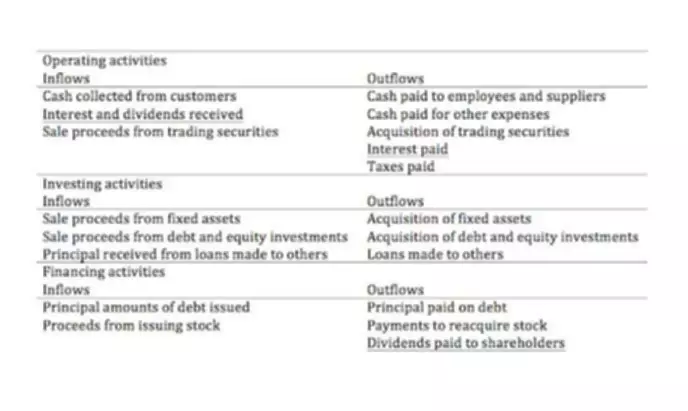Content

The buyer takes responsibility for the remainder of the transport, including the delivery to the destination port. The determination of who will be charged the freight costs is usually indicated in the terms of sale. If the Freight On Board is indicated as “FOB delivered,” the seller or shipper will be wholly responsible for all the costs involved in transporting the consignment. Where the FOB terms of sale are indicated as “FOB Origin,” the buyer is responsible for the costs involved in transporting the goods from the seller’s warehouse to the final destination. In FOB Shipping Point, the ownership transfers when the shipment leaves the seller’s warehouse . Under FOB Destination, the title of the goods transfers at the buyer’s loading dock or warehouse. Or, the title of the goods transfers once the goods reach the buyer’s specified location.
You are definitely giving your customers a clearly indicated information on how you charge for shipping and on how they can get the items shipped. Transparency is one of the best marketing strategies that work for most ecommerce businesses. If your customers are fully aware of the shipping process, there will be no misunderstanding between sellers and buyers. Also, the best thing about the shipping feature with Strikingly is that you have the option to grant free shipping for every order of at least a certain amount before taxes. It is much easier to determine when title transfers by referring to the agreed upon terms and conditions of the transaction; typically, title passes with risk of loss. The transfer of title may occur at a different time than the FOB shipping term.
How Executive Dashboards Lead to Better Business Insights
Assume a fitness equipment manufacturer receives an order for 20 treadmills from a newly opened gym across the country. The terms of the agreement are to deliver the goods FOB shipping point. Although FOB shipping point and FOB destination are among the most common terms, there are other agreements that vary from these two. FOB contracts have become more sophisticated in response to the increasing complexities of international shipping. Unlike FOB shipping, the supplier is not required to ensure the safe movement from port to ship. Understanding the differences between each is as simple as knowing how much responsibility the buyer and supplier assume under each agreement. The FOB incoterm is only applied to shipments being sent by sea or waterway.
Further to that, it has been found in the US court system that “Freight On Board” is not a recognized industry term. Use of the term “Freight On Board” in contracts is therefore very likely to cause confusion. The phrase passing the ship’s rail is no longer in use, having been dropped from the FOB Incoterm in the 2010 revision.
FOB Shipping Point or FOB Destination – Which is Better?
COD varies in that the customer only pays for the item purchased after it’s been delivered by the courier. It essentially indicates who is liable and responsible for goods if they are damaged, lost or destroyed during shipment. FOB states that the Free On Board is one of the most common incoterms, so it’s expected for business owners to have a firm grasp of what FOB is. FOB shipping essentially indicates who is liable and responsible for goods if they are damaged, lost, or destroyed during shipment. FOB states that the seller should pack the goods and deliver and load them onto the ship fully cleared for export. The cost and risk of the shipment are transferred to the buyer only after the goods are on board safely at a mutually agreed upon shipping port.

In this case, the seller legally owns the products and is responsible until it gets delivered to the buyer’s address. The title of ownership is transferred at the buyer’s specified address, loading dock, office address, etc. Once the products are delivered to the FOB address stated as the buyer’s address, it will be counted as a complete sale on the seller’s inventory while an increase on the buyer’s warehouse stock. To properly define FOB shipping point or free on board shipping point, it indicates that the buyer takes responsibility for loss or damage of the package once it gets shipped.
Freight Prepaid and Added
Know your FOB options, so you can make the best decision based on each situation. If you use inventory management software, track each FOB delivery online to keep a close eye on it from departure to arrival. Intermodal auto transport may not be your first consideration when you need to ship your car or industrial machine to another state. However, there certainly are scenarios where shipping your vehicle with intermodal shipping may just be your best option.
Which is better FOB origin or destination?
"FOB Origin" means the buyer assumes all risk once the seller ships the product. "FOB Destination" means the seller retains the risk of loss until the goods reach the buyer. FOB terms can impact inventory, shipping, and insurance costs.
Whether you are a consumer who loves to order stuff online or a business owner who sells and ships your products, you need to pay attention to these details. The answer to who is responsible when an item or product is damaged or lost upon shipping depends on what type of agreement or contract fob shipping point both parties have signed. Traditionally with FOB shipping point, the seller pays the transportation cost and fees until the cargo is delivered to the port of origin. Once on the ship, the buyer is responsible financially for transportation costs, customs clearance, fees, and taxes.
Overview: What is FOB in shipping?
Once the shipment is loaded onto a ship at the port of Miami, the buyer becomes responsible for all costs and risks involved in transportation. These loading costs include customs clearance, inland haulage, demurrage if any, origin documentation charges, and origin port handling charges – in this case, the origin port is Miami. For the buyer, there are potential situations where they might be responsible for covering costs before the goods are on board the vessel. For example, if loose cargo is shipped (i.e., not a full container load), goods must go through a Container Freight Station to be consolidated into one container.

Under EXW or Ex Works, the seller only has to keep the shipment ready. The buyer makes https://www.bookstime.com/ arrangements for the shipment and also picks up the goods from the seller’s warehouse.
What’s FOB Shipping Point?
FOB destination – Means that transfer of ownership and responsibility occurs at the buyer’s loading dock, their post office or their physical location. Upon delivery to the buyer’s noted location, the title is transferred to the buyer, who then owns the goods and is legally responsible for them. FOB shipping point and FOB destination point reference the moment in the transaction where the title of the goods transfers from seller to buyer. This is a very necessary distinction in that it determines succinctly which party is responsible and liable for any lost or damaged goods during the shipping at any given time.
- If a shipment is sent FOB Shipping Point (the seller’s warehouse), then the sale is concluded as soon as the truck pulls out of the seller’s loading dock and is noted in the accounting system as such.
- Free on board is a trade term used to indicate whether the buyer or the seller is liable for goods that are lost, damaged, or destroyed during shipment.
- To recap, FOB shipping point means that ownership of the goods and the liability in case of damage or loss transfers to the buyer as soon as the seller loads the goods on the ship at the port of origin.
- At this point, decisions must be made concerning what means of transportation to use (third-party truck, train, and so on) and which service-provider to hire for the purpose.
As I have mentioned, the laws and documents and processes that impact on importation and exportation vary for different countries. On the other hand, it makes it possible for the goods to be sent to the buyer’s home, and the buyer does not even need to be present when they are delivered. Nowadays, if you want to buy something, the easiest way to find it is online. Ecommerce is big business, a wave that has revolutionized most industries. The bill of lading is a legally binding document that the seller signs when delivering the goods to the carrier. To remove this confusion, it is now recommended that the Incoterms’ use be stated explicitly together with the edition of the standard.